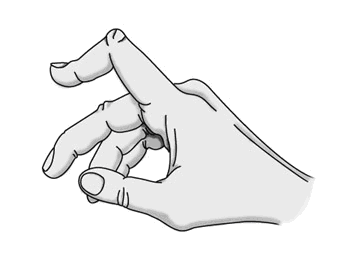In order to understand this condition, it is important to understand the anatomy and function of the wrist and hand. Please read Wrist Pain Info / Hand Pain Info’s sections on wrist anatomy and hand anatomy. For information on the biomechanics of the wrist and hand please read Wrist Pain Info / Hand Pain Info’s section on wrist and hand biomechanics.
What is a boutonnière deformity?
Tendons are rope like structures that connect muscles to bone. Many of the muscles that move the fingers and thumb are in the forearm. The tendons of these muscles cross the wrist and attach to the bones of the hand. Several tendons work together to straighten each finger. These tendons run along the side and top of the finger. The extensor digitorum communis (EDC) tendon runs along the top of the finger and one point of attachment is the middle phalanx (bone) of the finger. A boutonnière deformity occurs when the EDC tendon is torn or pulled off its attachment to the middle bone of the finger. This causes the proximal interphalangeal joint to become flexed and fingertip to remain straight. The tear looks like a buttonhole (“boutonnière” in French).

What does a boutonnière deformity feel like?
The finger may be painful to touch and may also appear red and swollen. The main problem is the inability to actively straighten your middle joint.
What causes a boutonnière deformity?
It is usually caused by trauma such as a cut on the top of the finger or “jamming” your finger when playing football, volleyball or basketball. If the force the finger is strong enough, the bone can actually pop through the opening. People with rheumatoid arthritis can also have this type of deformity.
Can boutonnière deformity be detected on Xray?
X-rays cannot detect a tear of the extensor digitorum communis tendon. However, an x-ray is done to detect any broken bones attached to the central slip of tendon.
What is the treatment for a boutonnière deformity?
Prompt, immediate treatment is required for a boutonnière deformity. Doctors and physical therapists that deal with people who have a boutonnière deformity can help outline the appropriate treatment program depending on the cause and severity of the problem.
What other information is available on boutonnière deformity?
Visit Joint Pain Info for information on other joint injuries and problems
